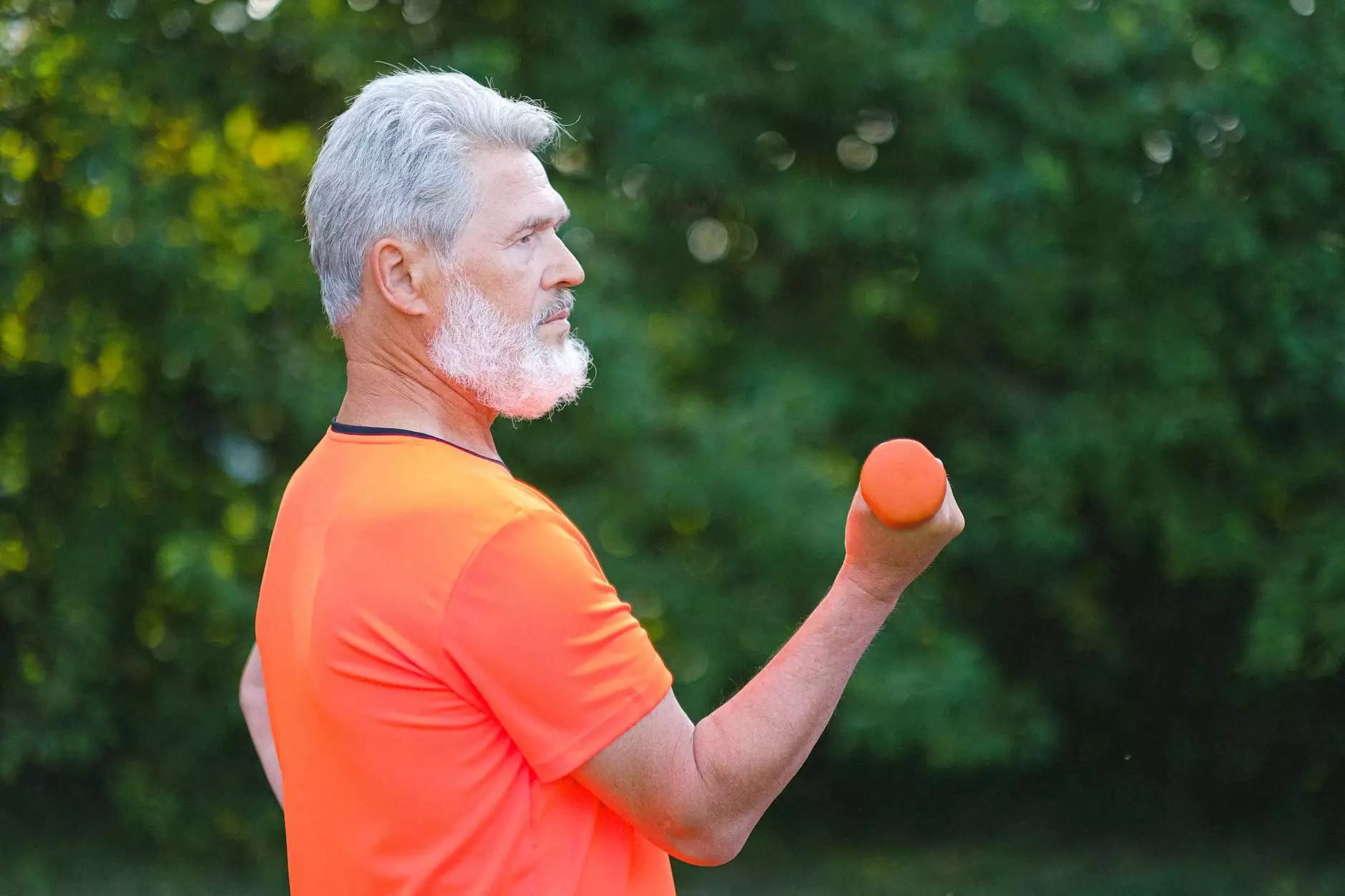Improving Arm Health: The Benefits of External Rotation Arm Exercises

As professionals in the fields of health and medical care, such as chiropractors and physical therapists, it is essential to continuously find effective ways to enhance the well-being of your patients. One area that often requires attention and care is arm health. In this article, we will explore the benefits of external rotation arm exercises and how they can contribute to the overall health and functionality of the arm muscles.
The Importance of Arm Health
Our arms play a crucial role in performing various daily tasks, ranging from simple activities like lifting objects to more complex movements required in sports and physical activities. Maintaining optimal arm health is vital to prevent injuries, improve performance, and ensure long-term functionality.
Understanding External Rotation Arm Exercises
External rotation arm exercises focus on strengthening and improving the flexibility of the muscles responsible for rotating the arm externally. These exercises primarily target the rotator cuff muscles, including the infraspinatus and teres minor.
By performing external rotation arm exercises, you activate and strengthen these specific muscles, providing stability to the shoulder joint and enhancing its overall functionality. These exercises target the external rotators, ensuring a well-balanced and efficient movement of the arm.
Benefits of External Rotation Arm Exercises
1. Enhanced Arm Strength: External rotation exercises specifically target the rotator cuff muscles, which are often overlooked or neglected. Strengthening these muscles helps to improve arm strength, enabling individuals to perform daily tasks and physical activities with greater ease and reduced risk of injury.
2. Increased Flexibility: Engaging in external rotation arm exercises promotes flexibility in the shoulder joint. Improved flexibility allows for a wider range of motion, decreasing the likelihood of stiffness and increasing overall arm functionality.
3. Injury Prevention: Weak rotator cuff muscles are more prone to injury, especially during repetitive activities or sports that involve overhead movements. Regular incorporation of external rotation arm exercises into a fitness routine can significantly reduce the risk of common shoulder injuries, such as impingement or rotator cuff tears.
4. Rehabilitation Support: For individuals recovering from shoulder injuries or undergoing post-surgical rehabilitation, external rotation arm exercises are often recommended. These exercises assist in the healing process, promote muscle recovery, and gradually restore strength and mobility.
How to Perform External Rotation Arm Exercises
There are various external rotation arm exercises that individuals in the chiropractic and physical therapy fields can recommend to their patients. However, it is important to note that proper technique and form are crucial to maximize the benefits and minimize the risk of injury. Here are a few examples:
- 1. Standing External Rotation: Stand with your feet shoulder-width apart, hold a resistance band in front of you with both hands, and keep your elbows bent at a 90-degree angle. Keeping your core engaged and shoulders relaxed, rotate your arms outward against the resistance of the band. Repeat for a certain number of repetitions.
- 2. Side-Lying External Rotation: Lie on your side with a dumbbell in your top hand. Position your upper arm against your body, bent at a 90-degree angle, and your elbow resting on your side. Slowly rotate your forearm away from your body until it is parallel to the ground. Hold for a moment and then return to the starting position. Repeat for several sets.
- 3. Bent-Over External Rotation: Stand with your feet hip-width apart, holding a dumbbell in each hand. Bend forward at the hips, keeping your back straight and core engaged. Allow your arms to hang naturally, palms facing each other, and then externally rotate your arms by squeezing your shoulder blades together and pulling the dumbbells back until your elbows reach shoulder height. Hold for a moment and then return to the starting position. Repeat for a desired number of repetitions.
It is recommended to consult a qualified chiropractor or physical therapist to ensure exercises are tailored to your specific needs and capabilities. These professionals can provide proper guidance, ensuring exercises are performed correctly and safely.
Incorporating External Rotation Arm Exercises into Your Practice
If you are a chiropractor or a physical therapist, incorporating external rotation arm exercises into your patients' treatment plans can yield significant benefits. By educating your patients on these exercises, you empower them to take an active role in improving their arm health and overall well-being. Customized exercise programs can be developed based on individual needs, injury history, and rehabilitation goals.
In addition to the direct benefits for your patients, addressing arm health also demonstrates your commitment to comprehensive care. By providing effective exercise recommendations and guidance, you establish yourself as a trusted professional in your field and increase patient satisfaction.
Conclusion
In summary, external rotation arm exercises are a valuable addition to any health and medical practitioner's toolkit, especially for chiropractors and physical therapists. By incorporating these exercises into your practice and educating your patients about their benefits, you can contribute to improved arm strength, flexibility, injury prevention, and rehabilitation support. By prioritizing arm health, you establish yourself as a knowledgeable and caring professional, enhancing patient trust and satisfaction.
Remember, proper technique and individualized approaches are essential when implementing exercises into treatment plans. Consult with your patients, assess their needs, and create personalized exercise programs to optimize results. By consistently prioritizing arm health, you can make a lasting positive impact on your patients' overall wellness.









